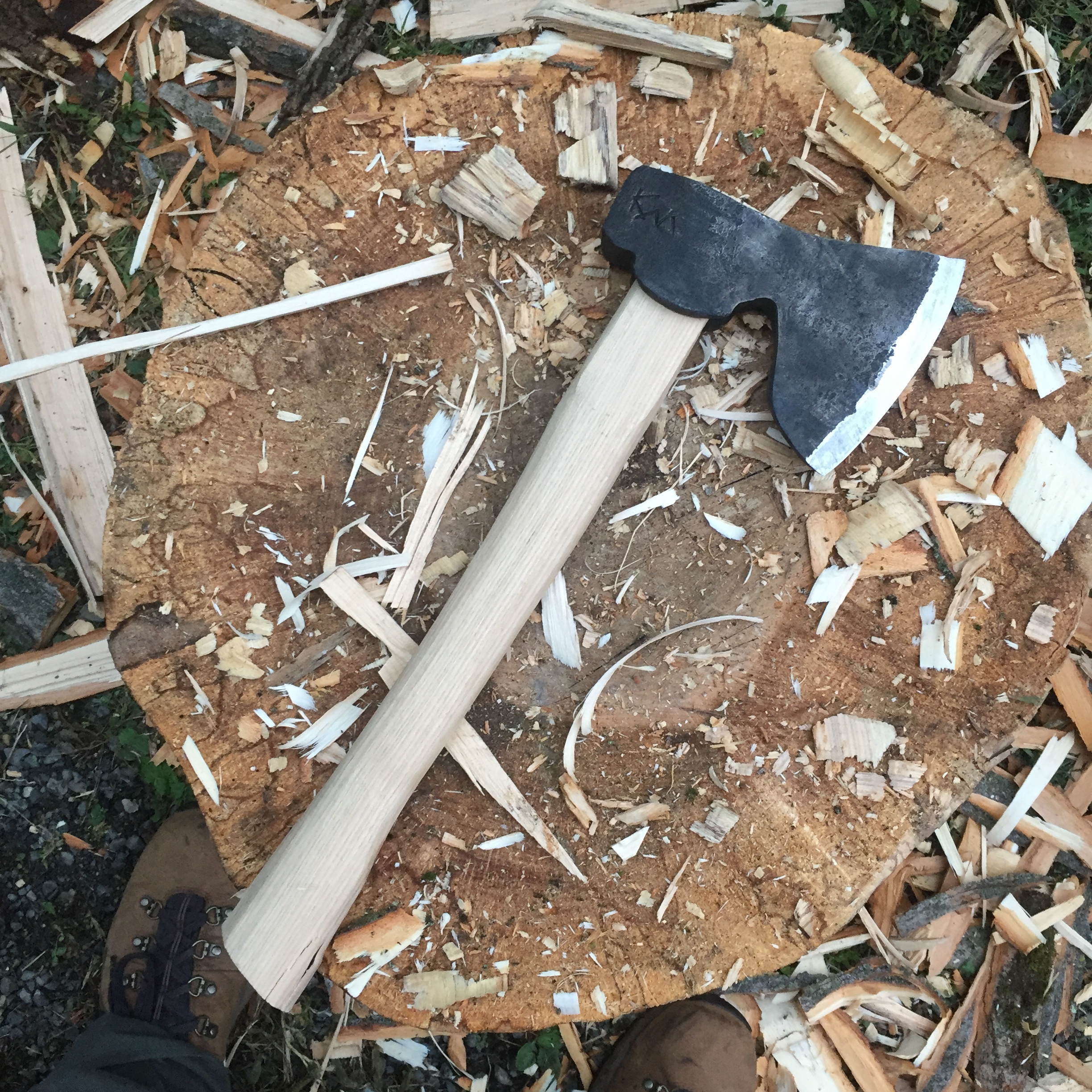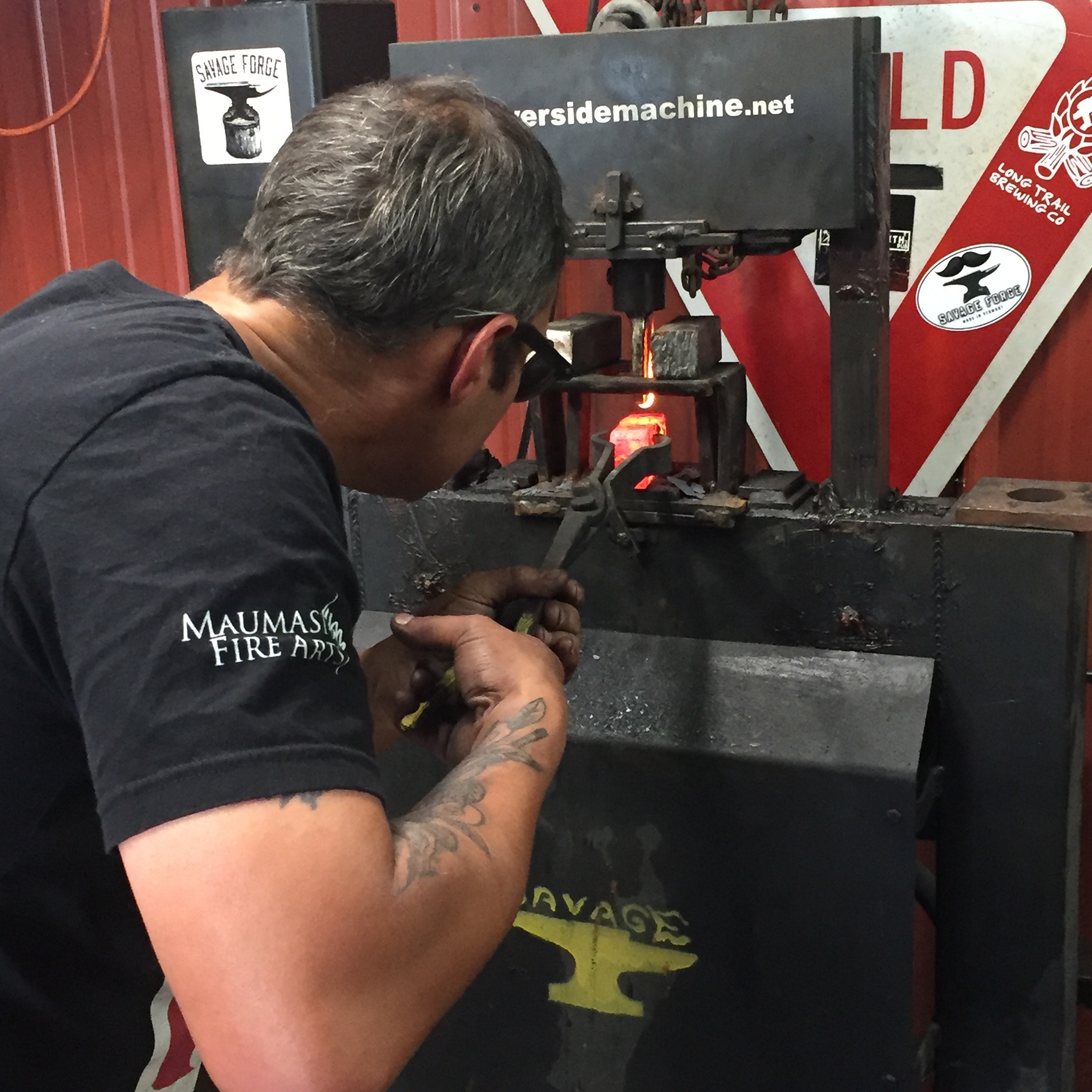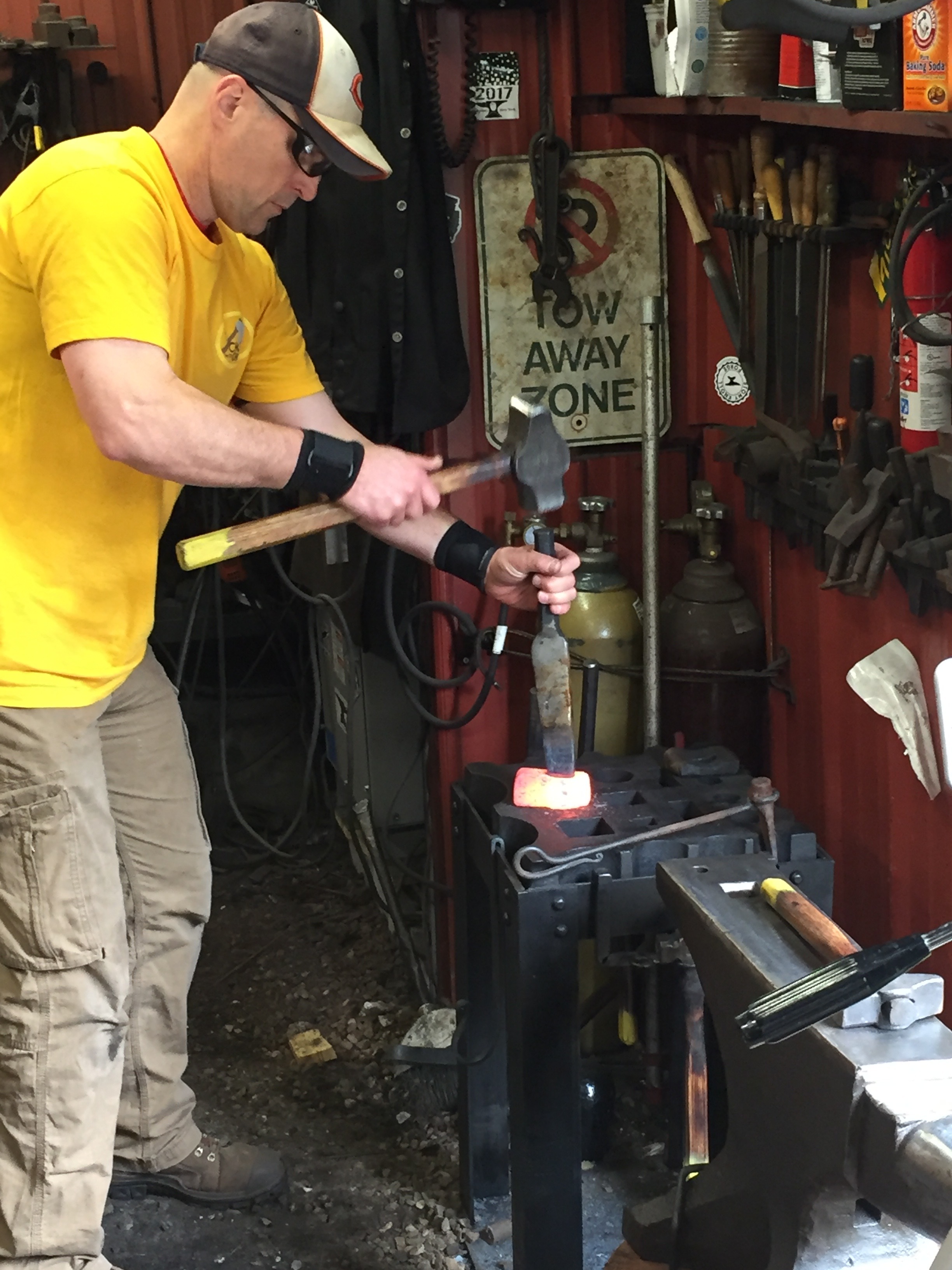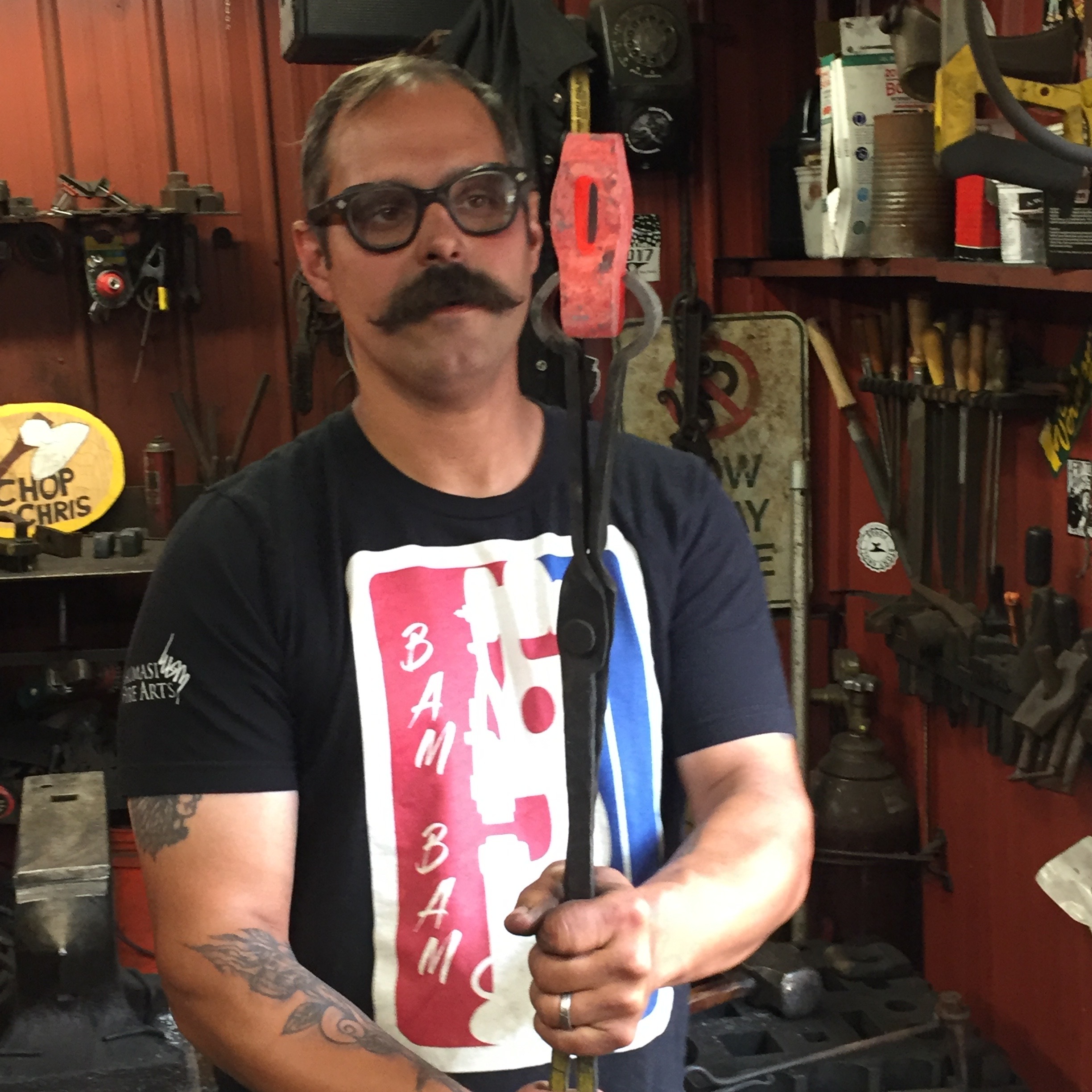Hand forged carving axe
As long as I have been a woodworker, there has always been another tool I “need” for an upcoming project, or one I really wished I had on the last project. As I delve deeper and deeper into my craft, the tools I require get more rare and more particular in their form and function.
.
At some point it became apparent to me that it would be easier to make some of my own tools than try to source and afford all the ones I wanted. So blacksmithing came onto my radar, and with it more tools I “need”.
Enter Jesse Savage Blacksmith.
As I gain more inspiration from green woodworking and windsor chairs, I have started harvesting trees, and processing my own stock for furniture and more. One way to produce amazingly strong furniture is through the use of “riven” parts, which are split from the tree rather than sawn. Part of this process is to remove the bark, pith and sap wood from split pieces, often by “hewing” the waste off with a hatchet or small axe.
Now I have a few hatchets, which are well suited for their intended purposes, but none of them fall into the carving axe category. So when Jesse called me up and told me he had worked out a system for producing small axes in his well appointed shop, and that I was welcome to come and forge one, I jumped at the chance.
I have a small forge and anvil setup at my disposal, but nothing like what Jesse has. For years Jesse has been hunting antiques and blacksmithing tools, and slowly assembling what can best be described as a working tool museum. He has a great range of hand and powertools, and the knowledge and experience to use them.
This day we were joined by “Chop With Chris” who wanted to make a single bevel hewing hatchet that was a bit more functional that what you normally find in antique stores.
First Jesse showed us some of his axes, which are strong and functional, as well as beautiful to look at. Then Jesse walked us through the process of forging an axe from solid tool steel, and what a fascinating process it is.
Using a combination of hand and power tools, we squared stock, punched and drifted the eye (handle hole), used the power hammer to “draw-out” the bit(blade) and shaped the axe very carefully with all manner of smithing tools. After grinding the bevel close to final, we tempered and heat treated our new axe heads.
The next day, I awoke with a strong sense of anticipation and rushed down to my shop to sharpen and handle my new friend. I opted to set up carving bevels on this one, what I mean by this is when holding the hatchet, the face that is the same way as the back of your hand has a steep bevel for breaking the grain, and the side that your fingertips are on, has only a slight bevel. This allows the hatchet to cut very aggressively without burrying itself into the wood too deeply. My hope was that this small axe would help me out where my other hatchets left me wanting more control.
I was not disappointed. The bevels work very well, the weight is very ballanced, and the edge retention is very good. I am left thinking that forging this lifetime tool with friends might be the most important part of the recipe. Thank you Jesse and Chris.
Chop with Chris can be found on youtube at Chop With Chris , and instagram @chopwithchris
Jesse Savage can be found on Instagram @jessesavageblacksmith , his website jessesavageblacksmith.com , twitter at jesseblacksmith and The Blacksmiths Pub Podcast wherever you get your podcasts







